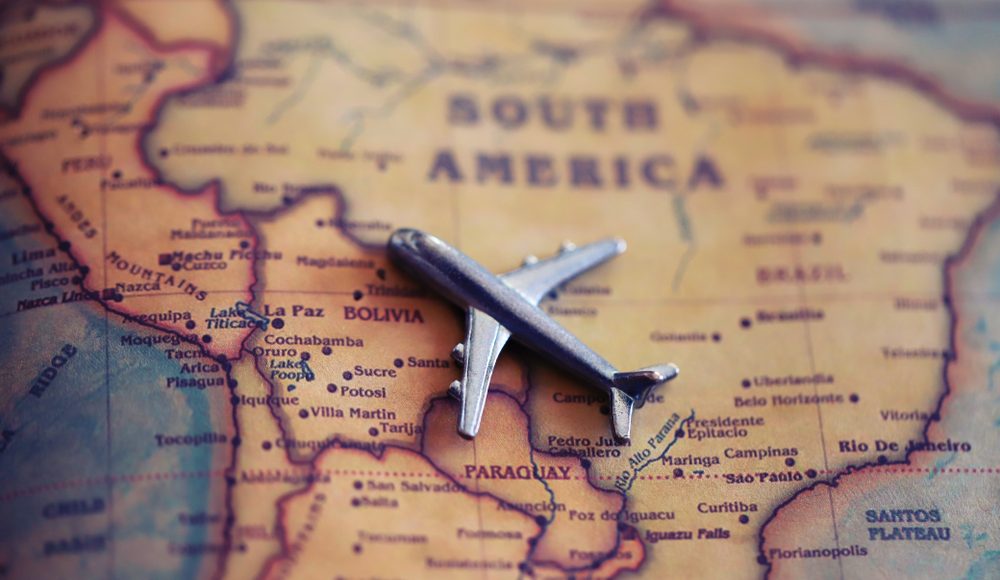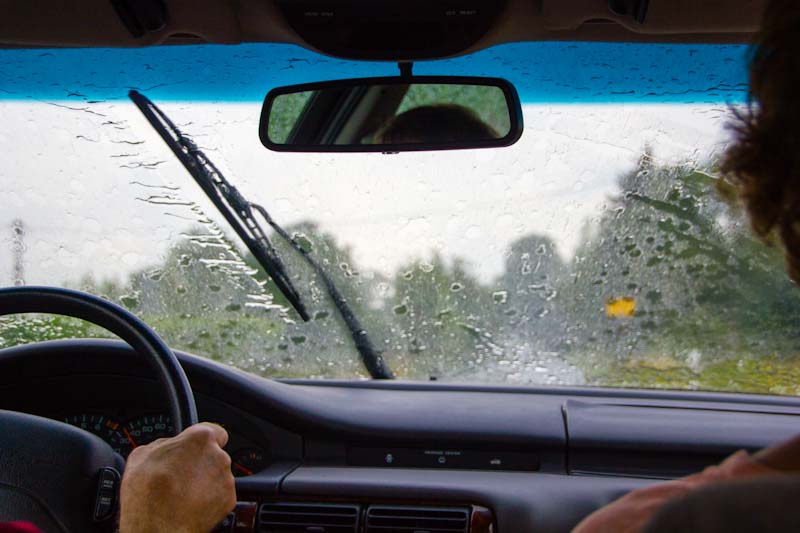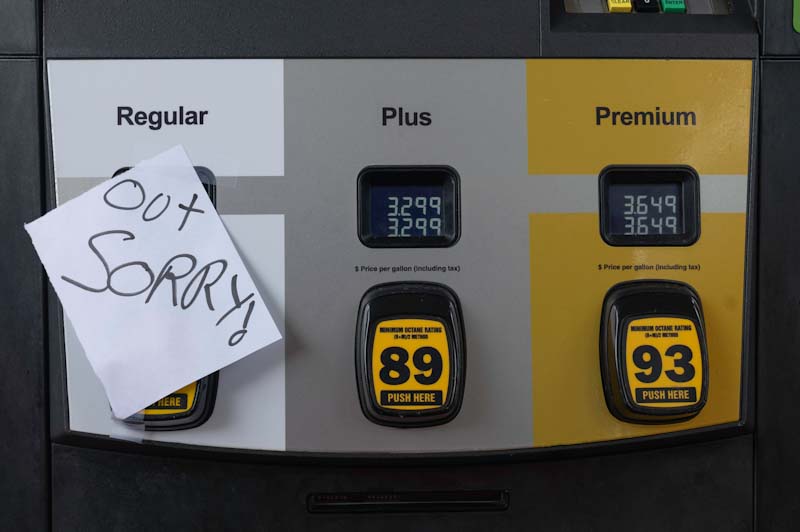The apocalypse has been a popular topic in Hollywood for decades. Every era and genre is guaranteed to have at least one movie, TV show, or book about the end of the world. These earth-shattering events come in myriad shapes and sizes. Maybe solar flares knock us back into the Stone Age. Perhaps scientists clone dinosaurs, despite a series of movies repeatedly proving this is a bad idea.
Maybe aliens are invading, like Orson Wells had everyone thinking during his radio broadcast of “War of the Worlds” in 1938. Perhaps a massive asteroid or comet crashes into the planet, causing an extinction-level event. A disease could sweep the globe, killing millions and leaving the rest of the world struggling to cope. That sounds familiar. Maybe we destroy ourselves, in one of a million ways, because if humans are good at one thing, it’s violence.
One thing almost all these stories have in common is the fact that our heroes or heroines are usually reduced to traveling on foot, or if they’re lucky, in heavily modified bug-out vehicles explicitly designed for the apocalypse. Public transportation, trains, and airplanes tend to go the way of the dodo, converted instead into secured bases or scavenged for parts.
Flying During Apocalyptic Scenarios
If the opportunity presents itself, is it safe to fly in an SHTF scenario? Here are some of the most common apocalypse scenarios you might encounter, as well as a few safer travel options if you need to traverse an apocalyptic landscape.
1. Viral Pandemic
This depends on the virus, its infection rate, and the mortality rate. Living through the COVID-19 pandemic taught us that with precautions like masks, increased disinfection practices, social distancing, and vaccines, traveling by plane can be carried out in relative safety. However, that’s with a virus that has a very low mortality rate. For a deadlier disease or one with no treatment, avoiding travel in a crowded aircraft will be your best choice for survival.
2. Nuclear Apocalypse
Traveling by air, in this case, will be a moot point unless you are keen on restoring some aircraft from World War II or before. Assuming you survive the initial blast and don’t die from radiation exposure, nuclear explosions also cause massive electromagnetic pulses that knock out all modern electronics. Fleets of aircraft will be grounded permanently.
3. Solar Flares/ Geomagnetic Storms
Solar flares and geomagnetic storms create the same sort of problem nuclear strikes do, minus the radiation and devastation that comes with an explosion. A powerful storm could potentially knock the entire planet back into the dark ages.
Most modern consumer technology isn’t shielded beyond what the FCC requires to prevent it from interfering with official equipment. It isn’t designed to stand up to a massive solar flare, so flying safely would be impossible.
4. Super Storms
Even skilled pilots and hurricane hunters often find it challenging to navigate safely through massive storms. Climate change is making hurricanes larger and stronger every year. If we reach the point where superstorms are constantly forming and lingering, trying to fly through them will not be advisable. Even navigating around them will be difficult because they can change air currents so dramatically.
5. War/Civil Unrest
This is a vast blanket that could cover many events and incidents, so we’ll try to keep it very nonspecific. In general, flying during war or civil unrest should be avoided at all costs. There’s no guarantee your plane won’t be shot down, hijacked, or even forced to land somewhere other than your destination, leaving you trapped and unable to find your way home.
This isn’t fiction or speculation — it happened recently in Belarus, and that was in an event limited to a single country. Imagine how dangerous it could be if the world is at war and you try to catch a flight.
6. Asteroid Strike
There are a lot of variables here to consider. What type of asteroid was it? Where did it strike? How big was it? These are moot points if a large enough asteroid hits land because it’s game over.
There’s no flying anywhere because there won’t be anyone left to fly. If a smaller asteroid or multiple ones strike land and water, there is a chance of survival, but flying will still probably be a bad idea due to debris being thrown up into the atmosphere by the impact. These could easily clog airplane engines, sending you crashing to the ground.
7. Supervolcano Eruption
There is a massive supervolcano in Yellowstone. If it erupts, life as we know it will end. The explosion will destroy most of the American Midwest and throw dirt and debris into the upper atmosphere, where it will linger for generations. Flying will be impossible for much the same reason as the asteroid strike — clogged airline engines and the tragic crashes that result.
These are all common apocalypse scenarios, but what about the less likely ones that tend to pop up in Hollywood?
8. Zombies
No. God, no. When someone succumbs to the zombie infection, do you want to be trapped in a small steel tube 35,000 feet in the air? You know someone is going to hide their bite so they can fly.
9. Alien Invasion
Aliens are probably invading from the sky. Do you want to get yourself closer to their ships? Stay on the ground.
10. Sun Expansion
Unless your plane is heading out of the atmosphere, give up already. There’s no surviving this event, so it won’t matter how you’re traveling.
Safer Travel Options
Even if flying is an option, it probably isn’t the safest way to travel if SHTF. Here are a few safer options you should consider if you need to navigate an apocalyptic wasteland.
- On Foot – Sometimes, the best tool at your disposal for transportation in an apocalypse scenario is your own two feet. It isn’t usually the fastest way to travel, but it will prevent you from getting stopped by cars blocking the highway or other obstacles that might be insurmountable in other forms of transport. It takes some more effort and will require a higher calorie intake to keep you moving, but in a pinch, your feet will get you where you need to go.
- Bicycles – While we are on the subject of human-powered transportation, we can’t forget bicycles. A bike can carry you further than your own two feet in the same amount of time, doesn’t require any fuel, and can even be rigged to haul cargo or tow a cart.
- E-Bikes – Bikes might be great, but what if you live in a hilly area, are out of shape, or don’t want to waste all your hard-earned calories on pedaling? E-bikes might be the perfect solution. They give you the option to pedal but can also provide thrust assistance. As long as you have an off-grid power solution like solar or wind, you can travel up to 70 miles on an e-bike on a single charge.
- Modded Cars – It’s time to get your “Mad Max” on. Stock cars might work for a while, but the gas will run out eventually, and you won’t be able to use them anymore. Opt for modded vehicles, especially those that have been converted to alternative fuel sources.
- Diesel Vehicles – Speaking of alternative fuel sources, hold onto it if you have a diesel car or truck. It’s very easy to convert a standard diesel engine to burn biodiesel, and you can make your own out of organic waste. It’s a win-win.
- Canoes/Kayaks – Water shouldn’t be a deal-breaker when it comes to traveling in an apocalypse. Canoes or kayaks require no fuel — other than the food you eat — and can navigate even shallow waterways. They’re often lightweight, and if you opt for a collapsable or inflatable model, you can easily transport them when you’re not on the water.
- Motorized Boats – If you’re not a fan of paddling, a small motorized boat can help get you where you’re going with less effort. Be mindful of the engine type you choose — just like cars, diesel engines will be the best option to ensure continued use.
- Ultralight Aircraft – Just because commercial airlines aren’t safe during an apocalypse doesn’t mean you can’t take to the air. Ultralight aircraft are designed for a single person, can take off from nearly anywhere, and have a decent range if you’re not carrying too much weight. If you’re planning to use an ultralight in an SHTF scenario, start practicing now. This isn’t a skill you’re going to want to try on a whim.
Should You Fly if the SHTF?
In most cases, the answer to this question is going to be an emphatic no. The best thing you can do during an SHTF scenario is to go to the ground. The only exception to this rule might be if you’re a pilot with your plane and the details of the apocalypse don’t make flying too dangerous.











MikeyW | November 5, 2021
|
Fun article, but totally worthless in providing new, useful information.
Skip | November 5, 2021
|
Electric cars/trucks are also a viable possibility for post-apocalyptic travel. If you have solar panels on your roof, or a windmill, you can recharge an electric vehicle indefinitely. If you must bug out and leave your renewable power source, you can still keep an electric vehicle charged and running. There are small, efficient, 100-watt solar panels available from sources like Amazon. These panels can be “daisy-chained” (connected together) to provide a huge source of electricity. The more panels you have, the more power you can produce. The more power you can produce, the faster you can recharge an electric vehicle. If you carry some of these portable solar panels in your vehicle, you can recharge wherever you happen to be. As previously stated, the more panels you have, the faster you can recharge. However, you’re not going to be able to fully recharge an electric vehicle’s batteries in an hour or two. Even if you have ten or more solar panels, it may take you several days to fully charge a vehicle. That said, you don’t have to charge the vehicle completely in order to operate it. If you stop for a day to charge your batteries, you may store up enough power to get you another ten or twenty miles down the road. And, once again, the more panels you have with you, the faster you can recharge. Also, electric vehicles are very low-maintenance. Motor oil, water and anti-freeze, spark plugs, fan belts, transmission fluid, power steering fluid, and, of course, fuel in the form of gasoline or diesel are not needed, so you can keep an electric vehicle running for years following a TEOTWAWKI, SHTF scenario.
Rob | November 5, 2021
|
As a former oil company Safety manager responsible for emergency and medical evacuation planning, and participated in multiple international emergency situations (Indonesia May 1998, Russia 1993 Parliament shelling, S. Korea 2008 planning, KSA Riyadh 2003 compound attacks, etc.) would offer the following particularly when considering point 5 in this article:
Maintain distance from rioting mobs or large gatherings.
Have in hand prepaid open air line tickets to a safe evacuation point, travel documents, and USD cash (for bribes).
Access to air charter services for evacuation purposes or other evacuation means (example if living by the sea a boat for evacuation).
Embassy registration and warden system. Company warden system.
Link into US military bases in-country if possible.
Plan ground evacuation transportation and routes
Have maps / compass, know the evacuation routes and alternatives (Indonesia May 1998 driving to the Jakarta airport to evacuate the country our company driver got lost and had to ask a demonstrating mob for directions)
Vary your driving route to work or other locations for security purposes, use an unmarked car.
Dress similar to locals to blend in
Keep informed of the local situation via news, local security service, embassy or other service and react / plan accordingly
Contingency plan, plan, plan, then revise/adapt as needed. As Tyson said, everyone has a plan until you get punched in the mouth.
Hope for the best, plan for the worst. If you hear weapons firing, it is likely too late.
Illini Warrior | November 6, 2021
|
the problem with saying emphatically NOOOO!!!! is the age old prepper debate of when a SHTF starts – great many say we currently are into one – some not because there hasn’t been the Big Bang necessary to justify the title …
getting caught away from home on a long distance “fly there” biz trip when the balloon goes up – has been a personal nitemare for decades >>> waking up and finding yourself in deep do-do 3,000 miles away from home or even in a different country & continent ….
if there’s still air traffic – might be the actual best bet – driving back that kind of distance thru already existing problems and more problems pending >> an air jump between safe points might be the ticket ….
and I’ve milled over in my mind what the prepper procedure would be for driving home that distance >>> gathering an ersatz BOB – recruiting fellow travelers (??) – determining best route from limited intel – weapons – extra fuel storage – communications – $$$$$$$ – ect ect ect